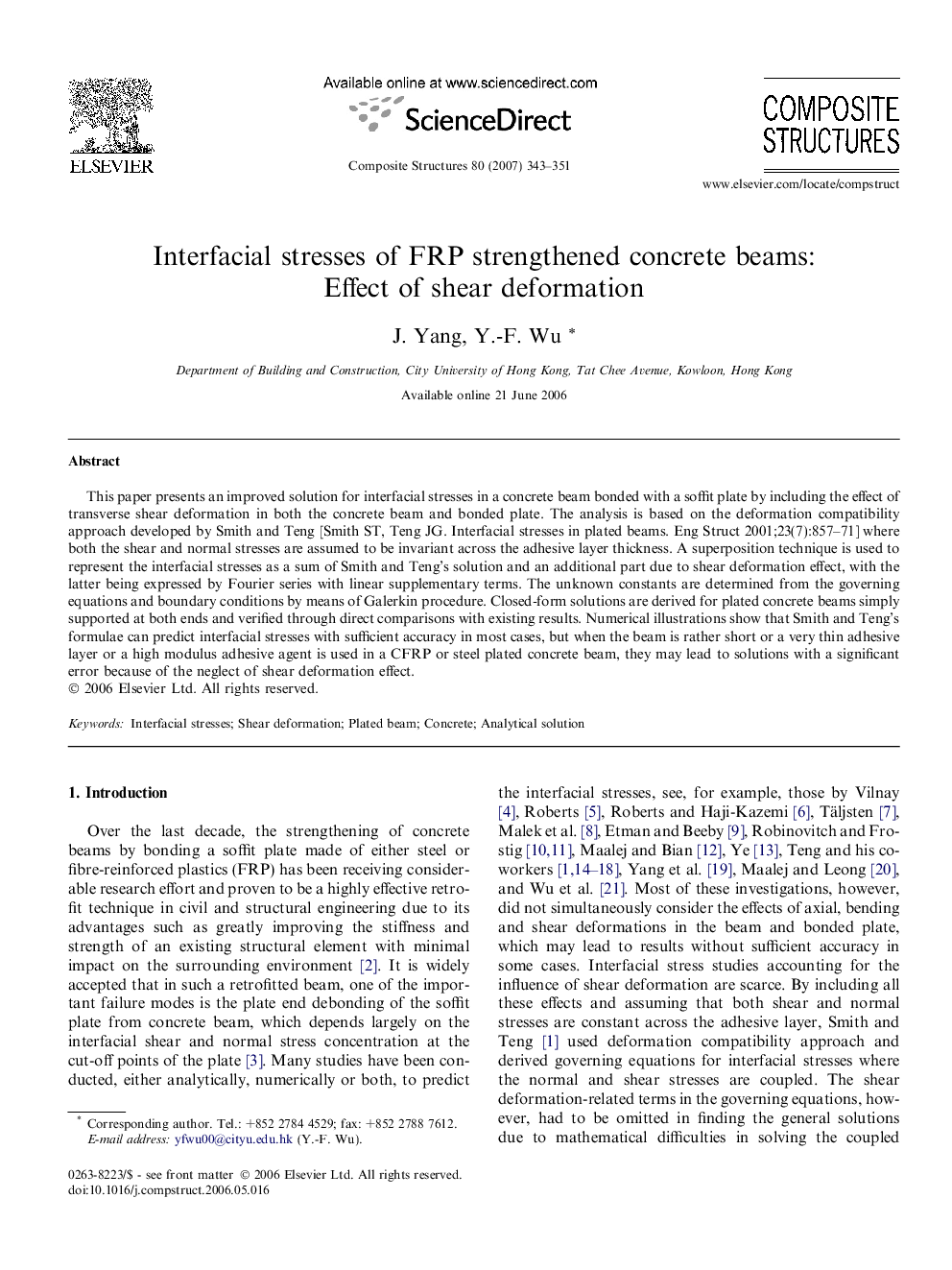| Article ID | Journal | Published Year | Pages | File Type |
|---|---|---|---|---|
| 254040 | Composite Structures | 2007 | 9 Pages |
This paper presents an improved solution for interfacial stresses in a concrete beam bonded with a soffit plate by including the effect of transverse shear deformation in both the concrete beam and bonded plate. The analysis is based on the deformation compatibility approach developed by Smith and Teng [Smith ST, Teng JG. Interfacial stresses in plated beams. Eng Struct 2001;23(7):857–71] where both the shear and normal stresses are assumed to be invariant across the adhesive layer thickness. A superposition technique is used to represent the interfacial stresses as a sum of Smith and Teng’s solution and an additional part due to shear deformation effect, with the latter being expressed by Fourier series with linear supplementary terms. The unknown constants are determined from the governing equations and boundary conditions by means of Galerkin procedure. Closed-form solutions are derived for plated concrete beams simply supported at both ends and verified through direct comparisons with existing results. Numerical illustrations show that Smith and Teng’s formulae can predict interfacial stresses with sufficient accuracy in most cases, but when the beam is rather short or a very thin adhesive layer or a high modulus adhesive agent is used in a CFRP or steel plated concrete beam, they may lead to solutions with a significant error because of the neglect of shear deformation effect.
